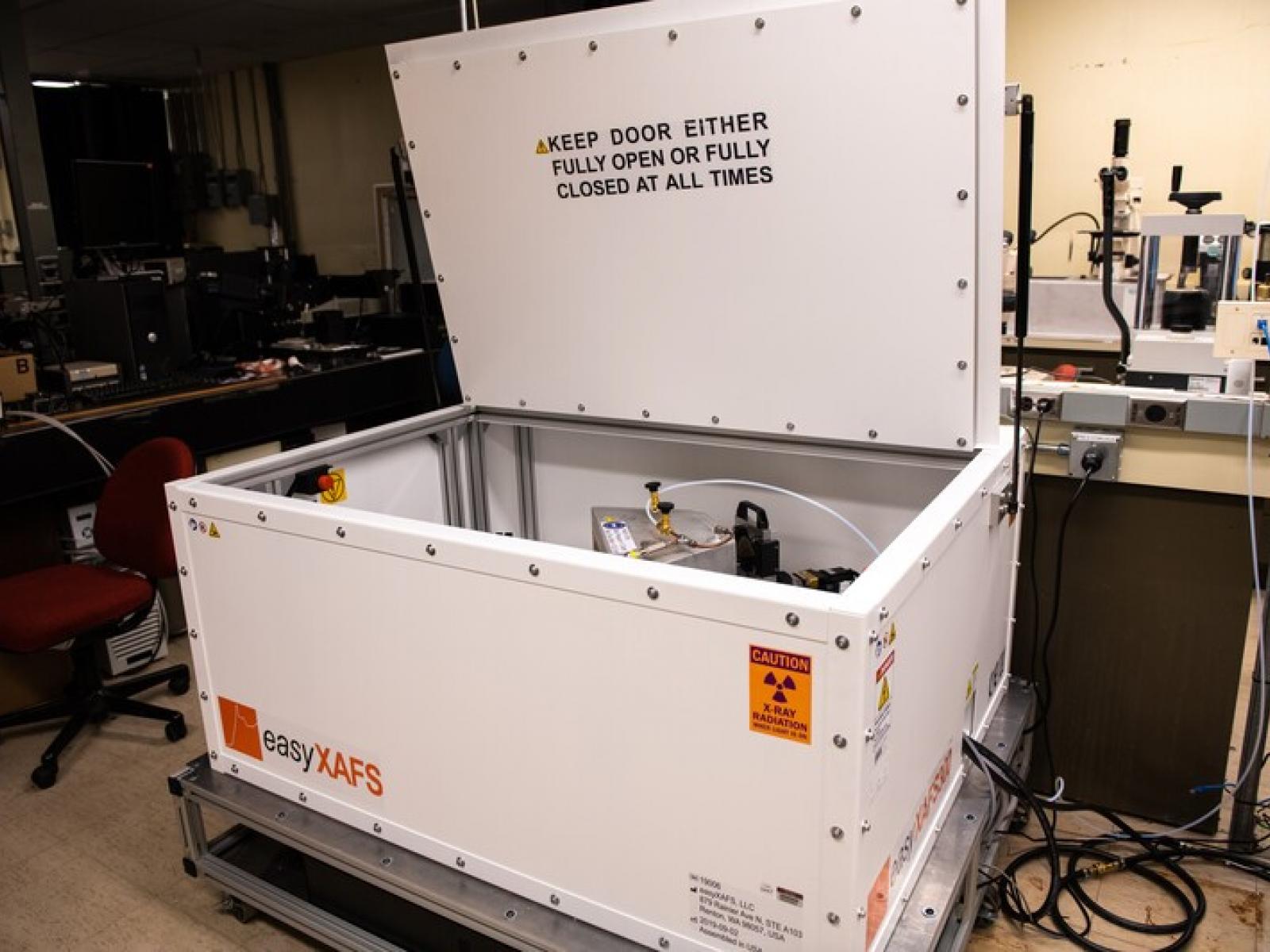Benchtop X-Ray Absorption/Emission Spectrometers
United States

Photo by Andrea Starr | Pacific Northwest National Laboratory
The benchtop x-ray laboratory houses two instruments (easyXAFS100and easyXES100) capable of performing x-ray absorption fine structure (XAFS) and x-ray emission (XES) spectroscopies. These techniques provide details about the electronic states, bonding, and geometry of specific elements in molecules or materials. Previously only available at synchrotron beam lines, benchtop instruments increase researchers’ ability to access XAFS and XES measurements as part of an integrated research workflow. These instruments allow researchers to directly probe the chemical and electronic state of metal atoms in a wide range of chemical systems.
The instruments can provide high-quality spectra with measurement times comparable to many synchrotron beamlines, with some spectra available in minutes, and operate at energy ranges best suited analyzing first row transition elements. Having two spectrometers allows one to be dedicated to XAFS and the other to XES measurements. XAFS spectroscopy uses the interference of electrons released by exciting the sample with x-rays to discern the geometry of the local atomic structure. XES monitors energy given off by the relaxation of electrons to probe the spin and oxidation state of ions, as well as help identify the ions or molecules that bind to the central metal atom and determine its reactivity.
Research Applications
- Both instruments can perform measurements from 5-12 keV with 0.5 – 1.5 eV resolution for data and use a conventional tube x-ray source.
- The easyXAFS300+ also limited measurement capability up to 19 keV. It can acquire K-edge spectra of first-row transition elements from Ti and higher, as well as accessing many L- and a few M- edges of various higher Z-elements.
- The easyXES100 is dedicated to XES measurements and covers the same range of elements as the easyXAFS300+.
- In addition, the easyXAFS300+ has been fitted with a custom in situ and operando cell, designed to heat to 400 °C and 20 bar, and operate with several different gases. A separate cell has been developed for use with solutions.